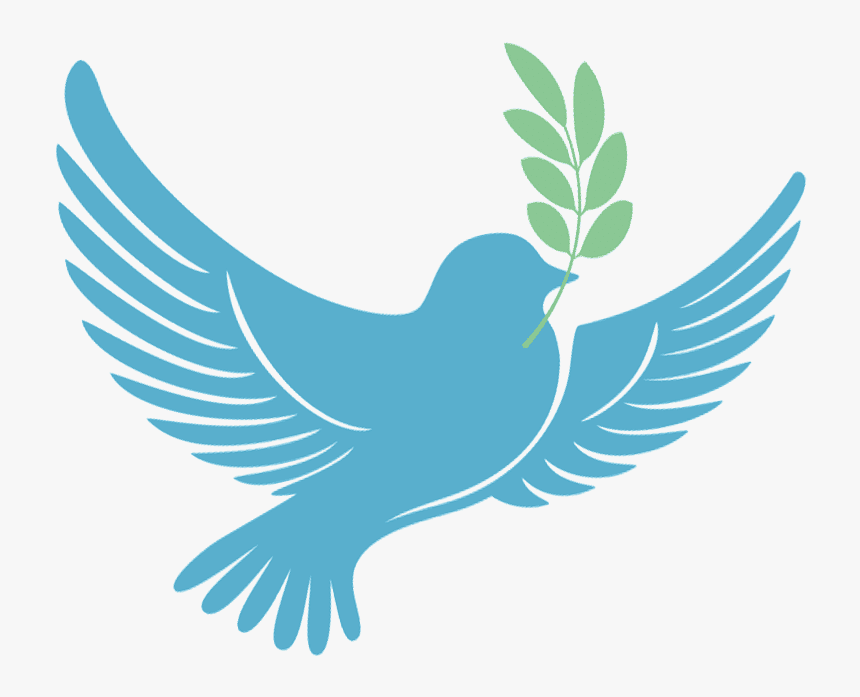Leave a Reply
Want to join the discussion?Feel free to contribute!
In an intriguing experiment with DALL-E 2, a cutting-edge AI system capable of generating images from textual descriptions, we sought to explore the contemporary visual representations of peace. Inputting the simple word “peace,” the AI returned an image that strikingly reflects today’s selfie culture: a figure making the victory and heart signs, symbols widely recognized and used across the globe.

The AI-generated image of peace subtly hints at gendered perceptions of peace and the predominant selfie trend among women.
The evolution of peace symbols mirrors the changing tides of our culture and societal norms. Traditionally, peace has been depicted through universally recognized symbols such as the serene dove or the noble olive branch. Do these symbols still communicate to, primarily, younger people?

Oliver branch symbolises peace as the core value of the United Nations.

Dove and olive branch were ‘challenged’ in the past as symbols of peace. In the 1960s the anti-nuclear movement triggered emergence of the following symbol of peace.

The above peace symbol was designed combining the semaphore signals for “N” and “D” to represent nuclear disarmament.

Fast forward to the present, and the question arises: Are these traditional symbols adequate for today’s generation, or is there a need for a refresh to maintain relevance in a rapidly evolving societal landscape?
The AI-generated image of a woman portraying peace through victory and heart signs may signify more than just the prevalent norms of selfie culture; it could reflect a shift in understanding of peace in the modern era. This depiction suggests that peace is not just a macro-scale political aspiration but also a personal, individual state of mind, easily shared and understood across digital platforms worldwide.
Moreover, the gendered portrayal of peace in the AI-generated image opens up discussions about the roles and representations of women in the pursuit and symbolism of peace. It challenges us to consider whether peace is inherently seen as a feminine trait or a reflection of broader societal trends, including the demographics of social media users.
As we stand at the crossroads of tradition and innovation, the shift in peace symbols from the dove and olive branch to more contemporary signs reflects a deeper transformation in societal values and communication methods.
Perhaps the key to engaging younger and future generations in the discourse on peace is not discarding the old symbols but embracing new ones that complement the evolving digital landscape. By weaving together the old and the new, we can foster a richer, more diverse dialogue about peace that resonates across all ages and cultures.
As we navigate this evolving landscape, the challenge and opportunity lie in ensuring these symbols encapsulate the depth and breadth of what peace means in today’s world, bridging the gap between tradition and innovation, between the global and the personal.
If you’re interested in further exploring the evolution of peace symbols and their contemporary significance, you may find the following resources insightful:
1. What are the peace symbols of today? – This blog post delves into the evolution of peace symbols and their relevance in modern times.
2. How should we visualise AI? – Explore the challenges and considerations in visually representing complex concepts like AI without falling into stereotypes or cliches.
3. Governing Tech for Peace: a Multistakeholder Approach | IGF 2023 Networking Session #78 – Discover how advancements in peace technology are reshaping global perceptions of peace through innovative approaches and collaborations.
Jovan, that’s a lovely piece and creative use of AI and images. However, could you please explain this line: ‘implying that more females are taking selfies’.
Although this is probably true (see the statistics on selfies at https://photutorial.com/selfie-statistics/), it’s not necessarily relevant. I would infer that images identified as women are linked to peaceful things — creativity, children, strength, happiness, heath, intelligence, and hope — some of the building blocks for peace — the characteristics you defined in your algorithm for the analysis.
Since you highlight the female image, I’m curious about your research and thought process on this topic. Thanks for the thought-provoking post.